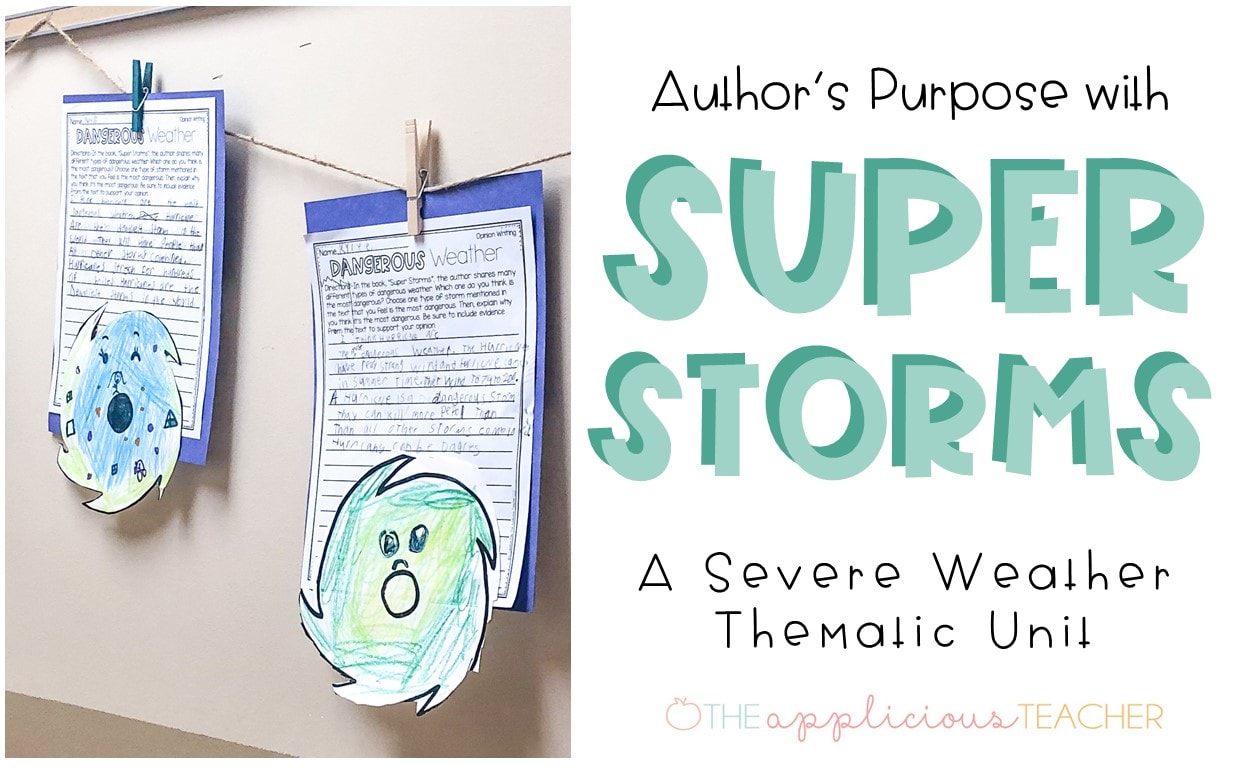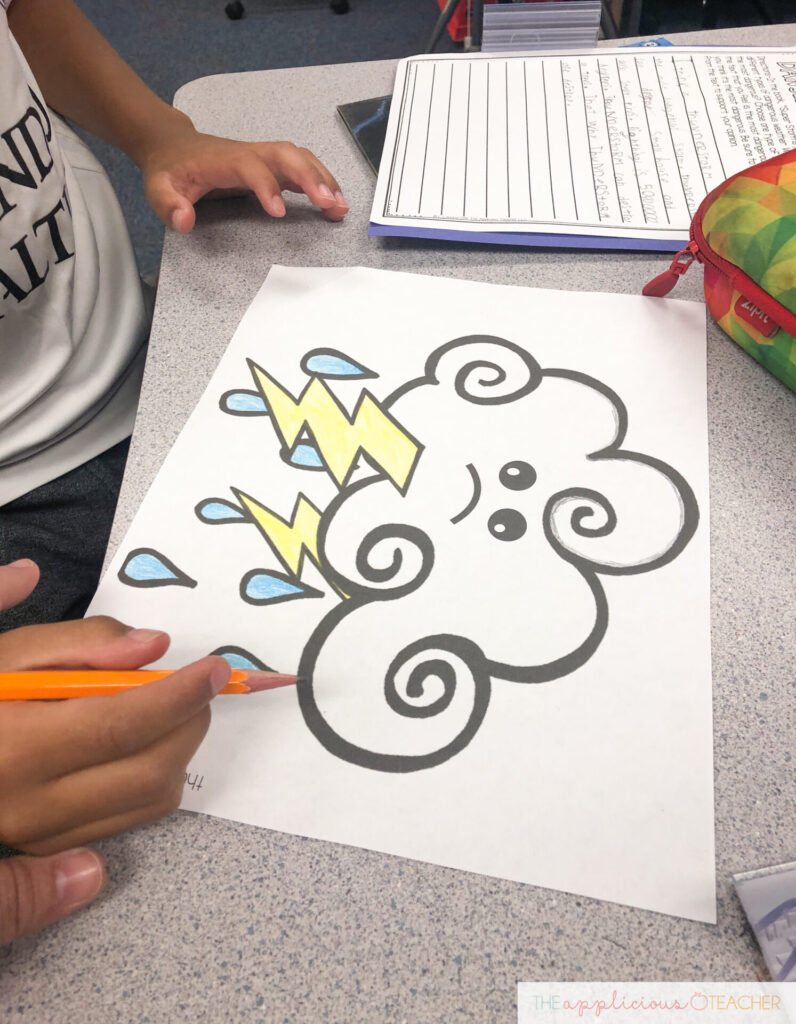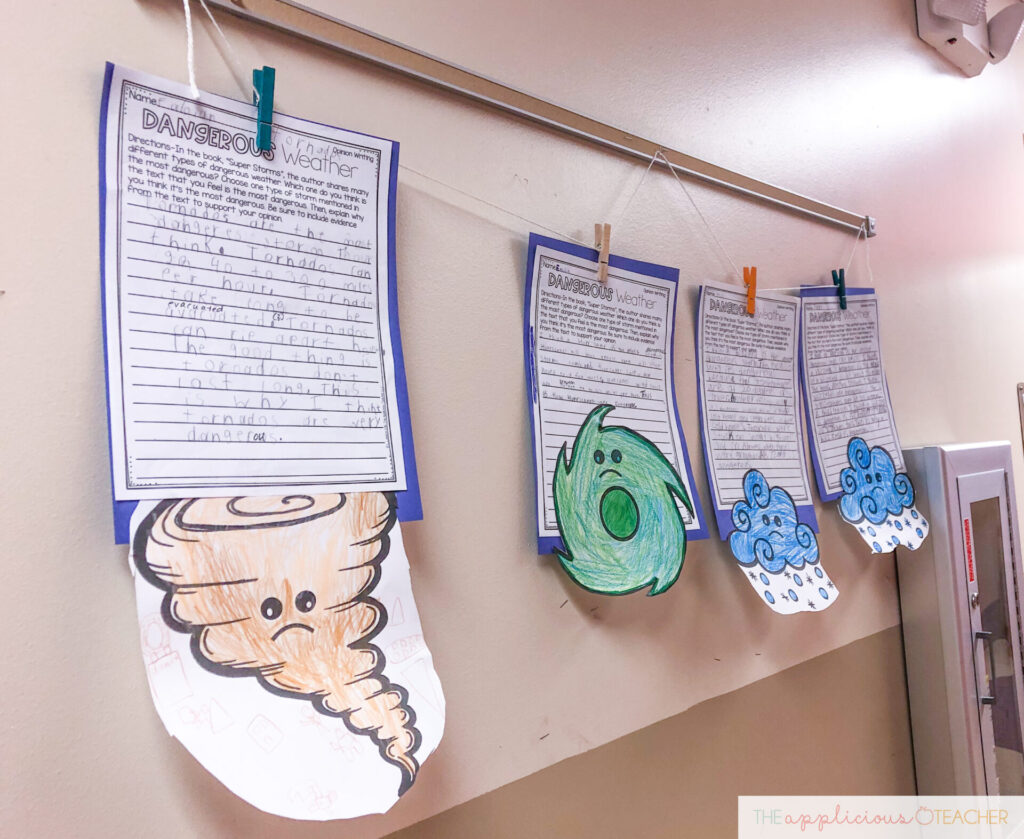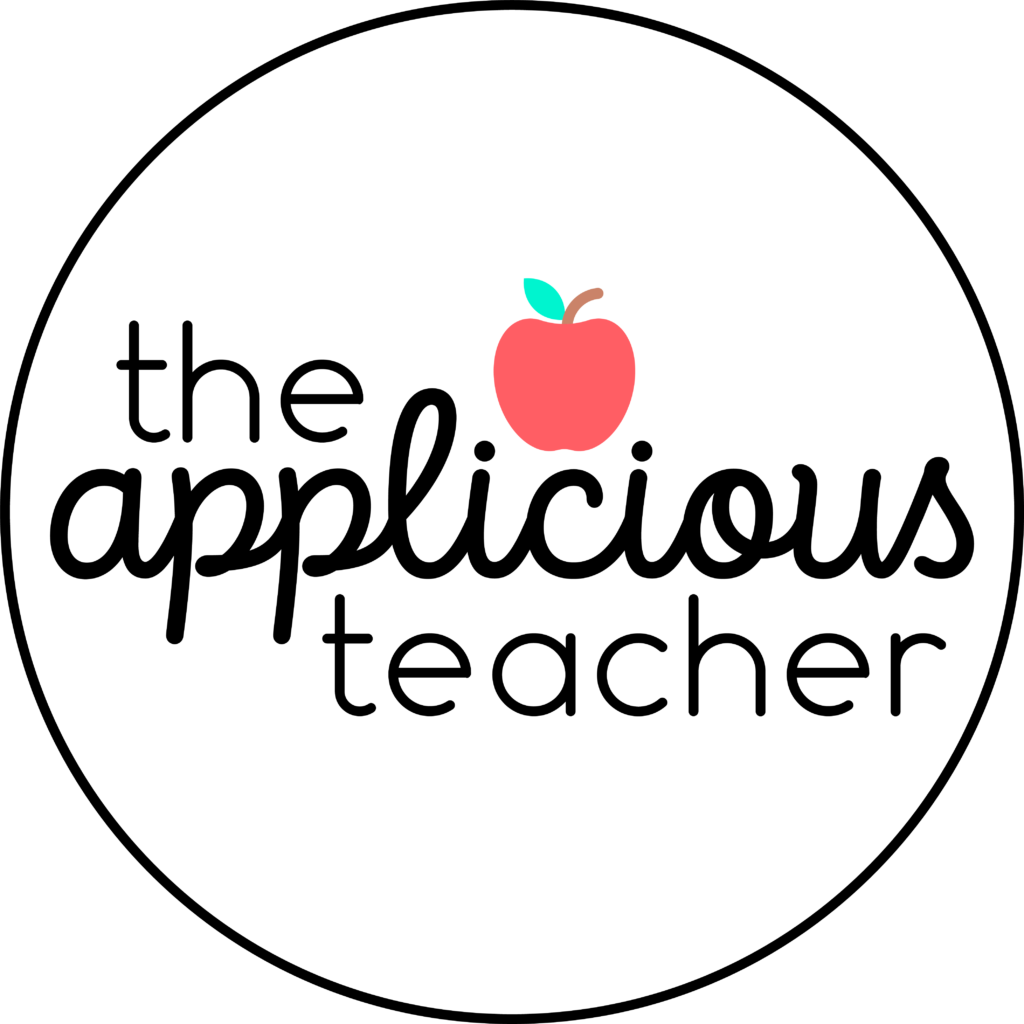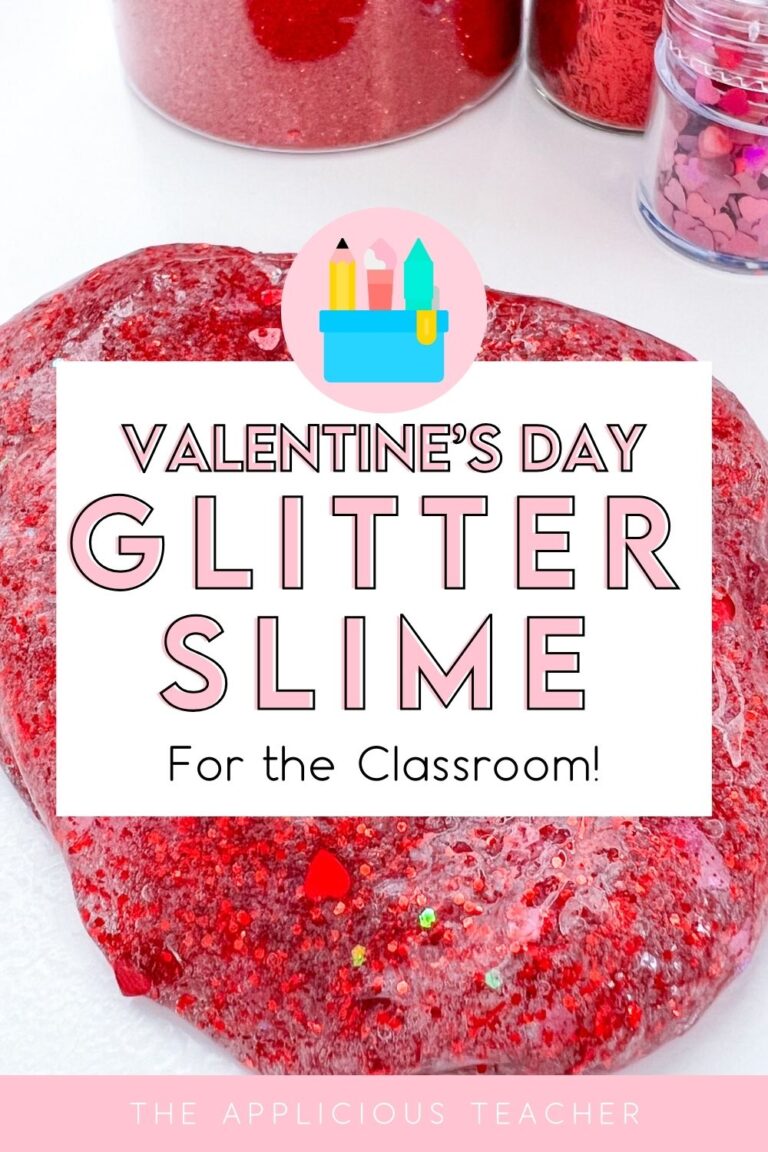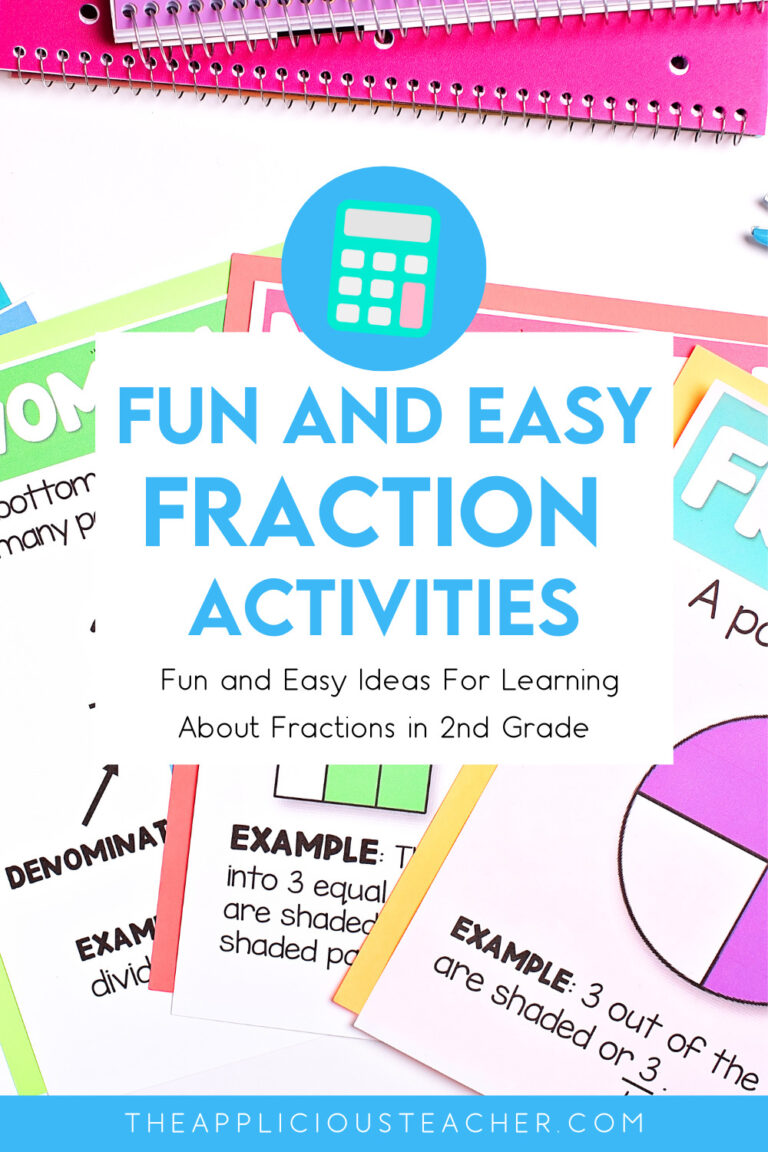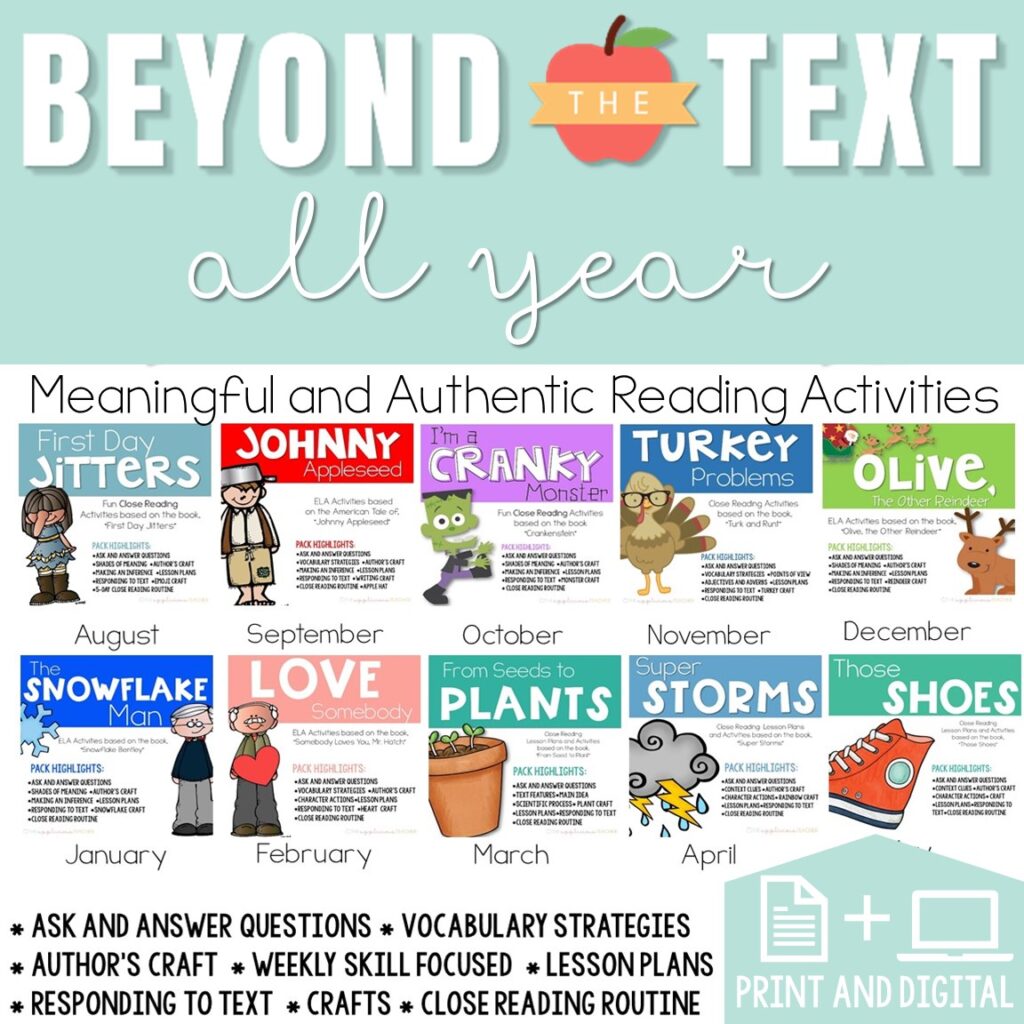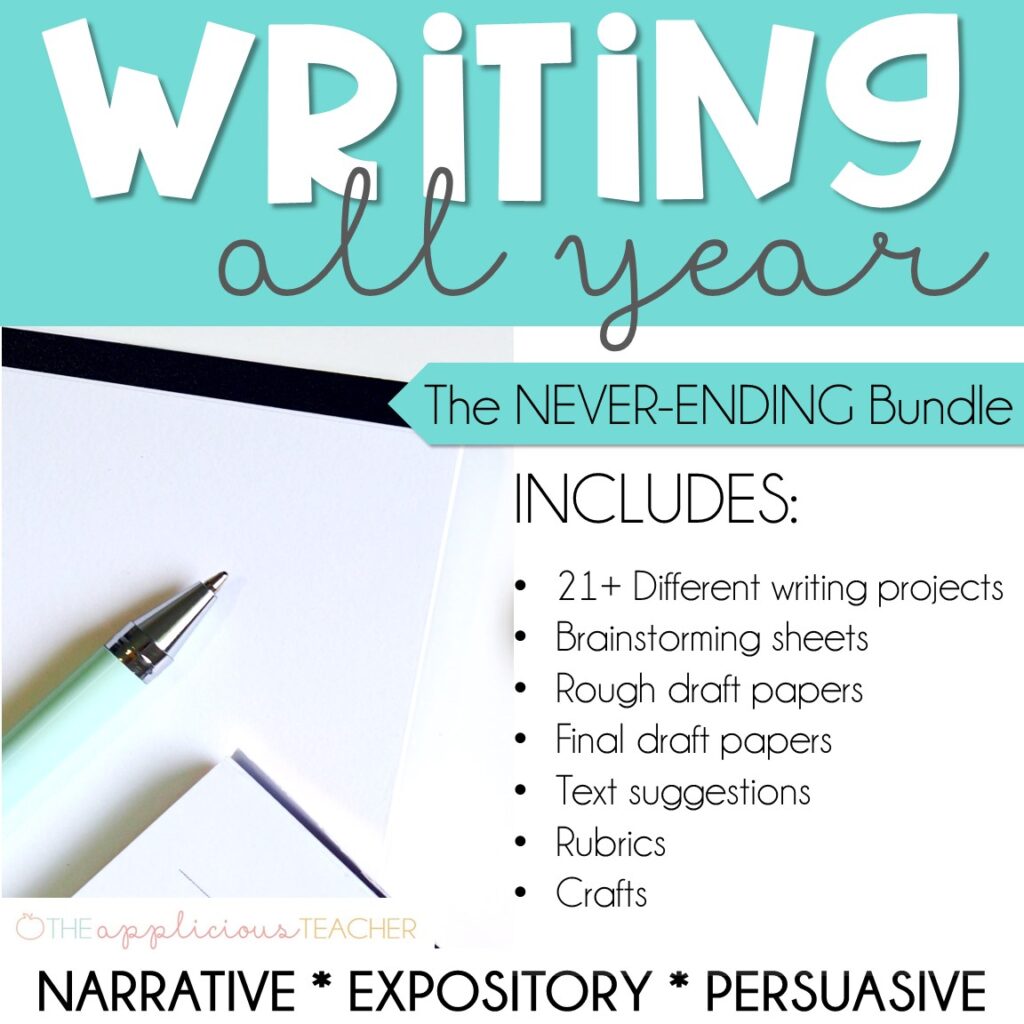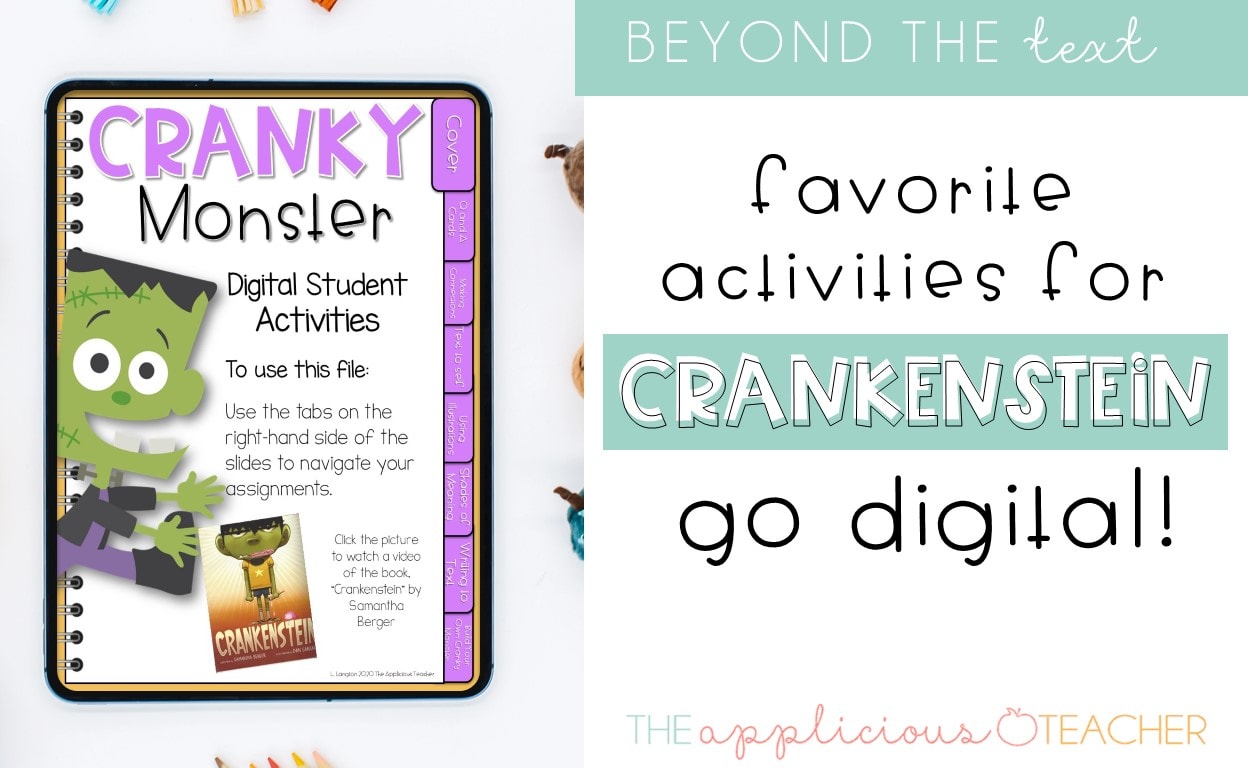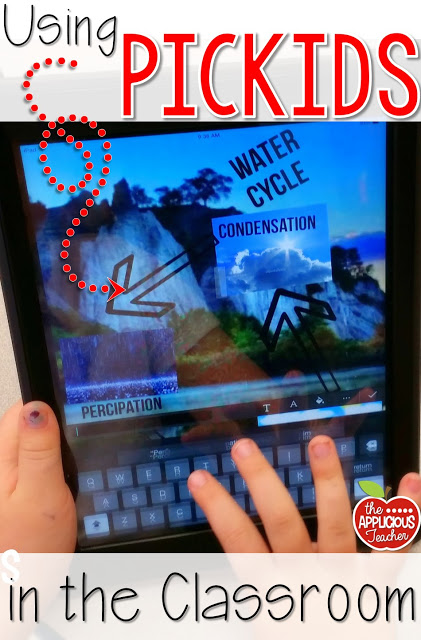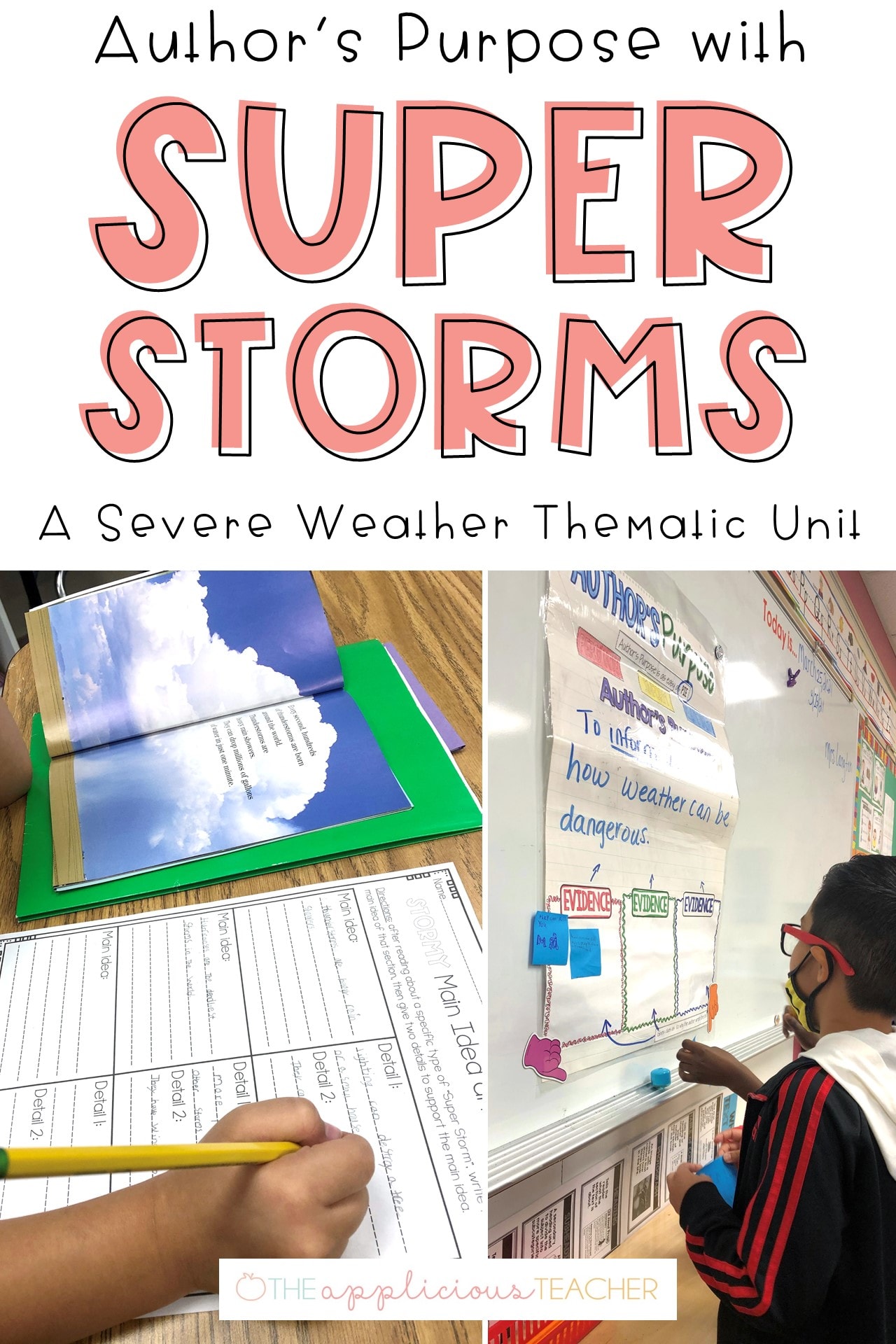
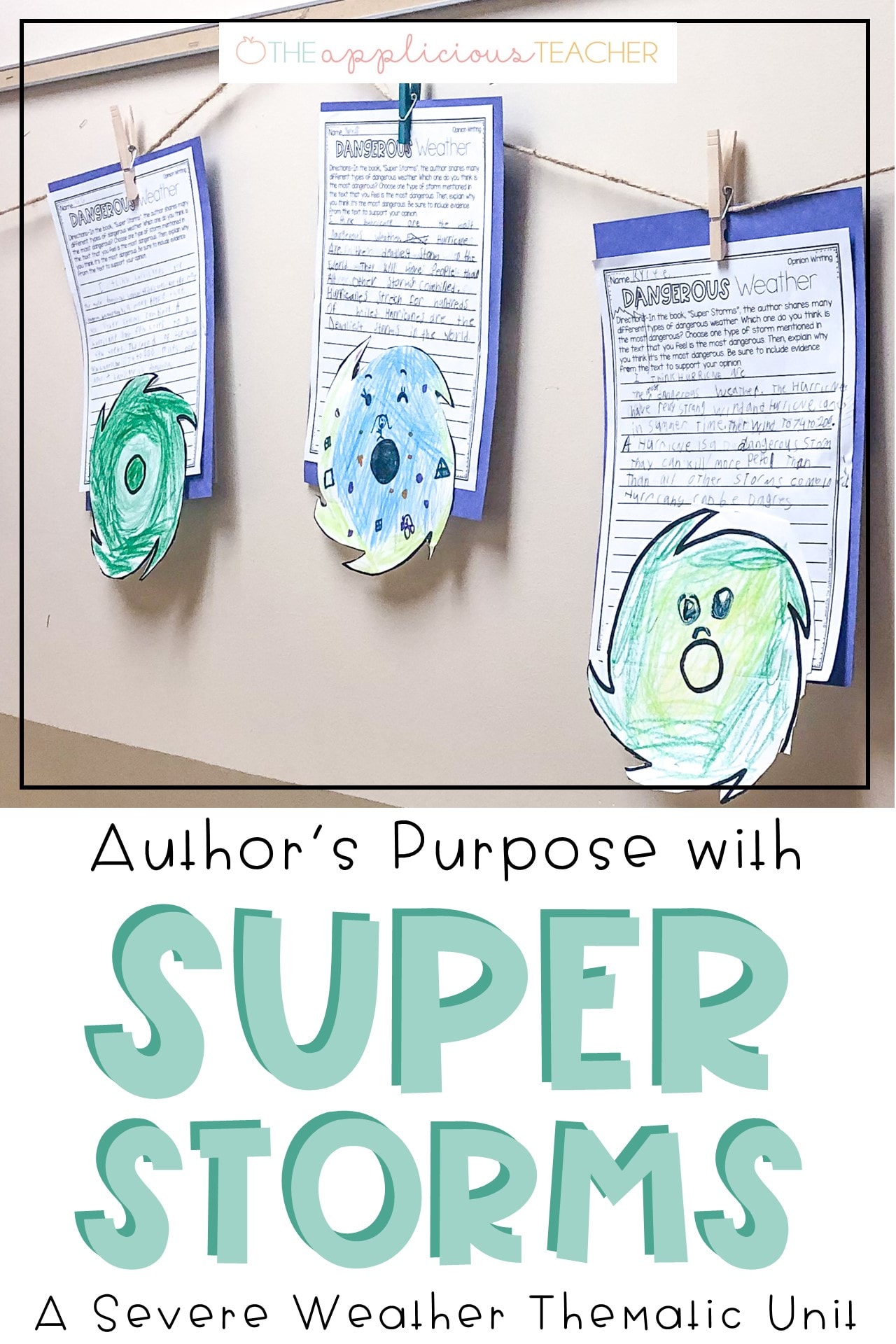
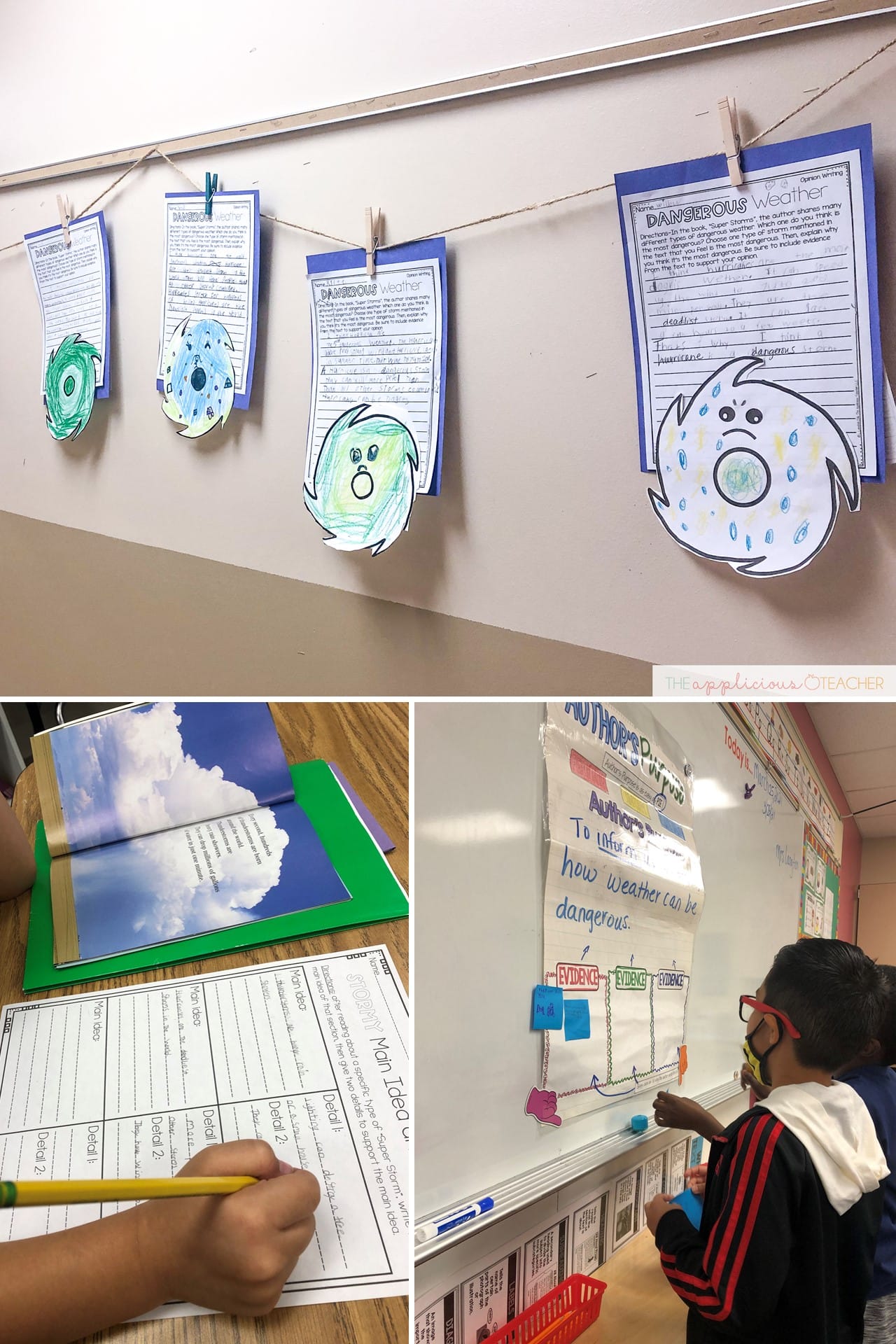
One of my favorite ways to touch on multiple learning standards at once? A thematic unit with a book at the heart! This post outlines how to use the book, Super Storms by Seymour Simon to teach the author’s purpose, main idea and details, build content vocabulary, and so much more! Oh, and you know there’s going to be a fun craft in there, too! Keep reading to check it out!
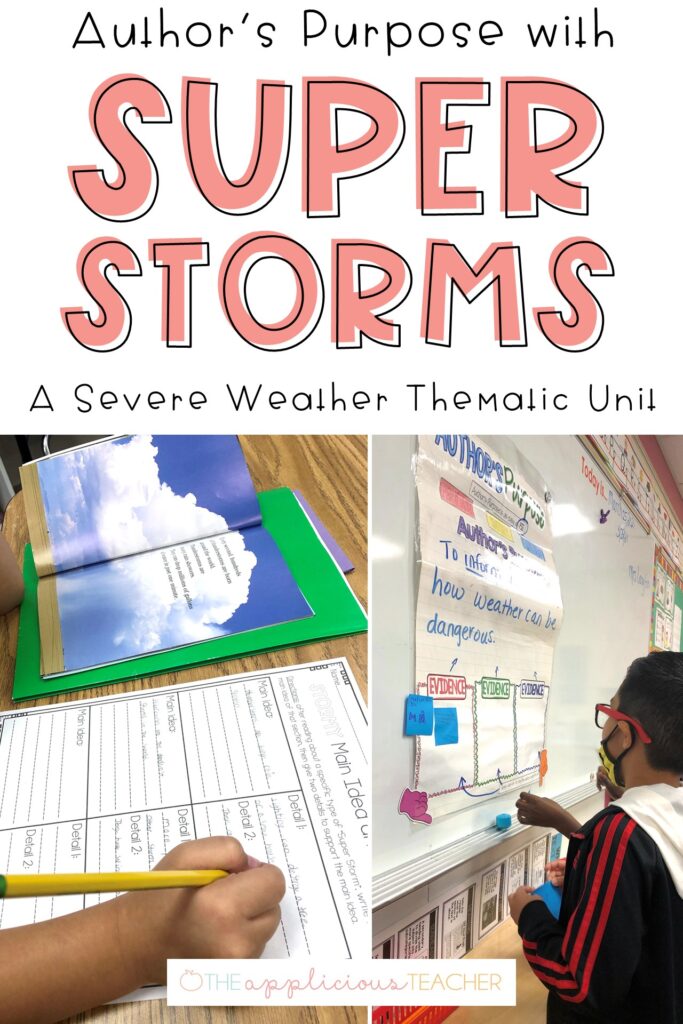
One of my favorite units to teach around this time of year is weather- and to be more specific: superstorms! Here in Florida, we are no stranger to intense thunderstorms, tornadoes, and the occasional hurricane, so learning about how to be safe during inclement weather is one that hits close to home in the lightning strike capital of the world!
That’s why when it was time to start learning about weather in science, I knew we had to bring some of that weather flair to our reading and writing block, too. I mean, after all… thematic teaching is my jam!
Please note this post contains some affiliate links. If you do follow my links, please know that I do make a very small commission from your purchase. There is no cost to you, but this extra coinage allows me to continue creating free resources and writing awesome content for you! You can read more about the affiliate networks I’m apart of here!
Super Storms by Seymour Simon
To anchor our thematic unit, I pulled out an oldie but a goodie by Seymour Simon. I was first introduced to this book through an old reading series. It was always a student favorite and, of course, it is jam-packed with tons of information. It really is the perfect book for teaching so many different skills!
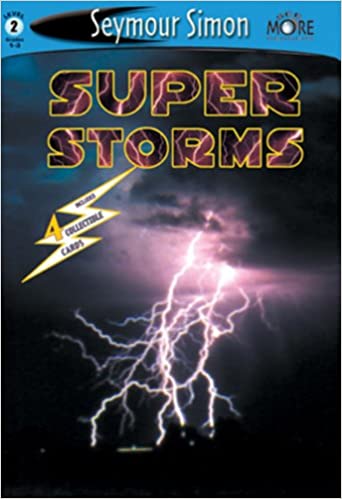
Since I no longer had access to the old reading curriculum, I found the actual book version online- Thanks Amazon! and quickly ordered six copies for my students. Seems a bit much, I know… but it was important for the students to hold and read this text for themselves, so I figured this was the time to buy a few to share. With 17 students (and six online) we made it work really well, luckily!
Weather Content Vocabulary Posters
Our first read of the book was all about understanding and building content-specific vocabulary. Although vocabulary instruction is good for all students, when I moved to a Title I school, I found students there need a bit more structure and routine surrounding the vocabulary development. So, after reading, we brainstormed some weather words and events we knew. As students shared their words, I wrote them on the whiteboard. Seriously, nothing too fancy!
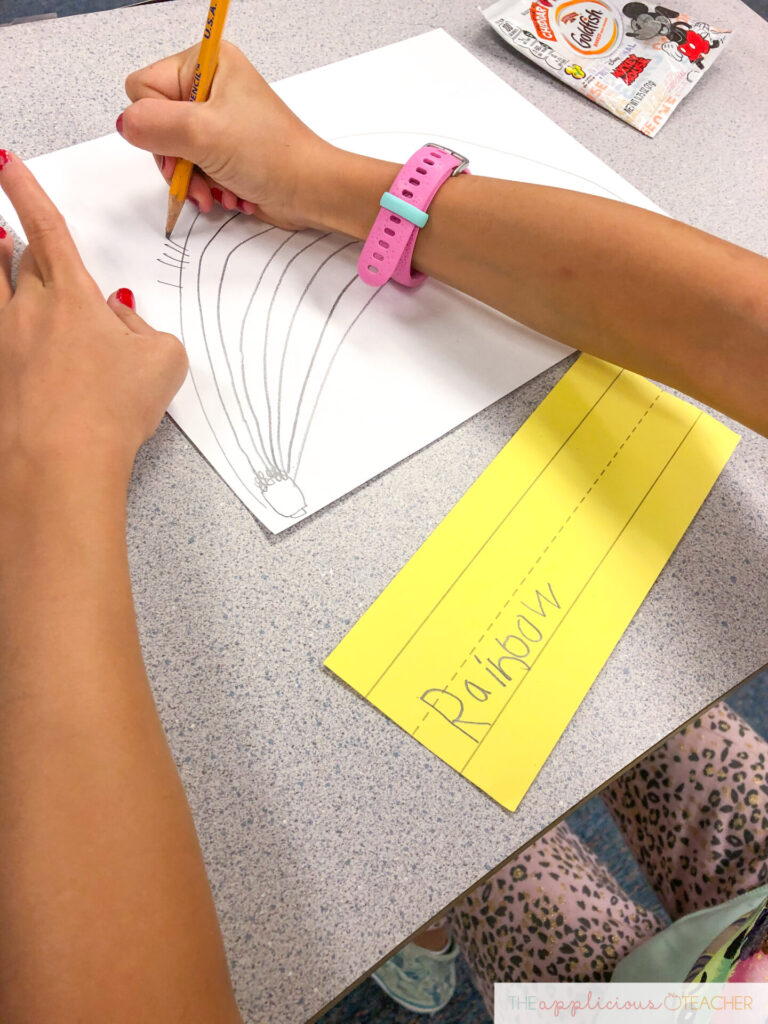
Then, students got a small piece of sentence strip. They chose a weather word from our brainstorm and wrote the word on their sentence strip. To bulk up this lesson a bit, you can have students write the word in a sentence. If I could redo this lesson, I would definitely have them do that!
After that, students created a vocabulary poster for their words. If they chose “tornado,” then they would illustrate a tornado. Simple, but it achieve what I wanted: engagement and buy-in for a challenging week ahead!
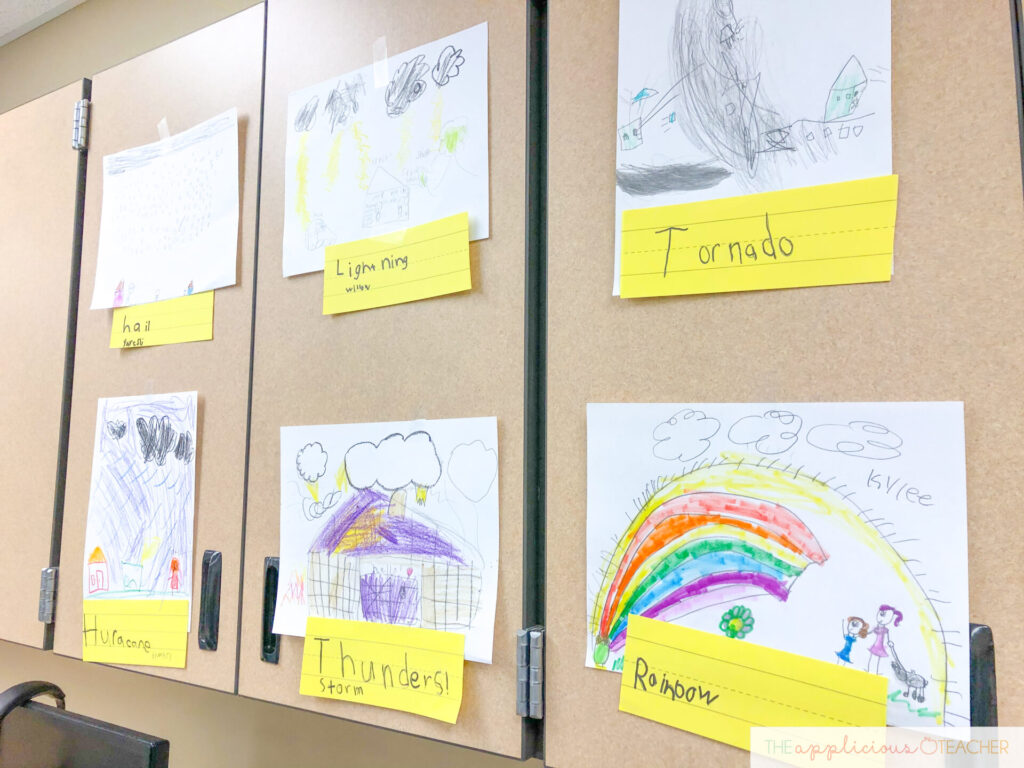
As students finished, I plastered their artwork on the back cabinets. As we went through our unit, I referred back to their posters as a guide.
Author’s Purpose with Super Storms
Remember when I mentioned earlier about needing buy-in and engagement early in our unit? Well, the next day’s lesson is why.
Our focus for the second day was to better understand the author’s purpose in writing the text. This can be really tricky for second graders. It’s a lot of brainwork to read… then think, form ideas, think again, and read again. This kind of brainwork can be exhausting if not done correctly!
To start the lesson, we re-read Super Storms. This time, I read AND students around the classroom read. We had a big discussion on how important it is to follow along with the reader, and since I had enough books for groups of 2-3 students, they could follow along.
After reading, I pulled out my handy-dandy interactive anchor chart for Author’s Purpose, and we discussed the reasons writers write. I introduced students to the saying, “Author’s Purpose is as easy as PIE” and we quickly reviewed what each letter stands for.
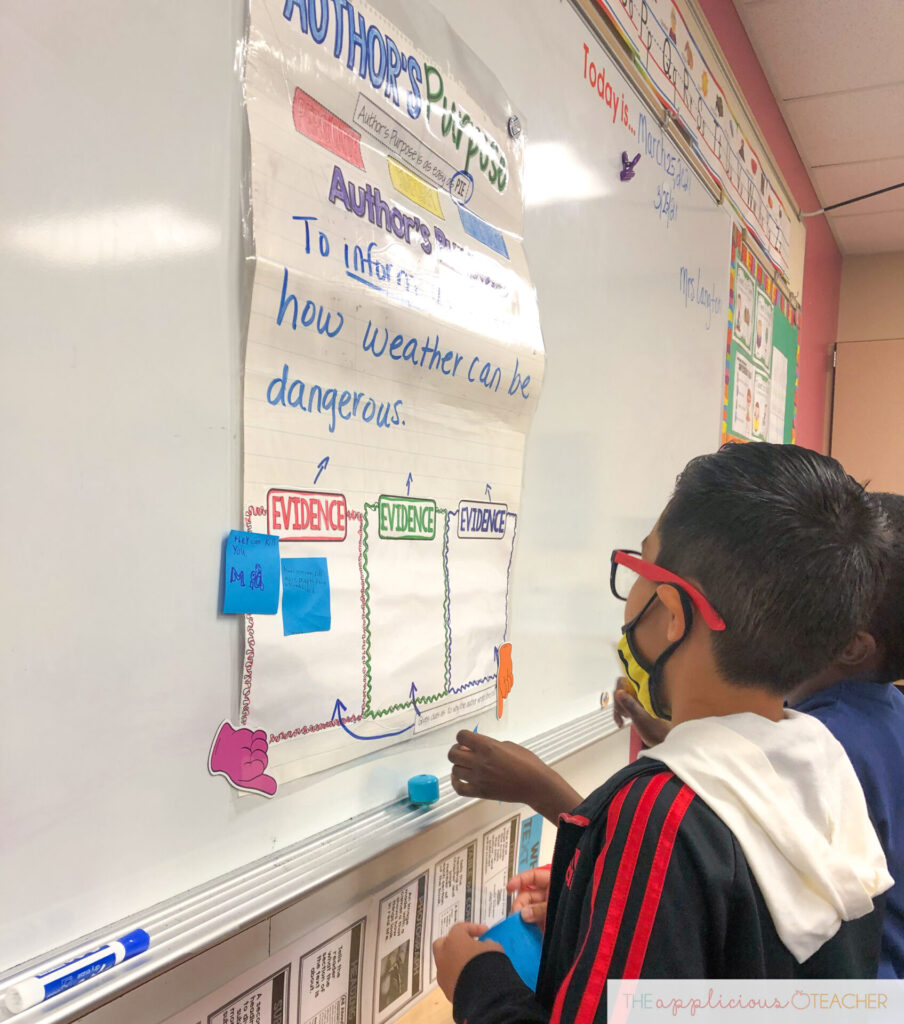
Then, as a class, we worked to formulate the author’s purpose. After some discussion and guidance, we came to the conclusion that the author wrote Super Storms to inform the reader about dangerous weather.
I wrote our sentence at the top of the chart. Then, each student got a sticky note, and I challenged them to find supporting evidence in the text. In their groups, they shared the book and worked to find evidence. Remember: each student got a sticky note. Everyone was expected to participate and have an answer. Honestly, they were excited to write on a sticky note and add it to the chart, so that was a win!
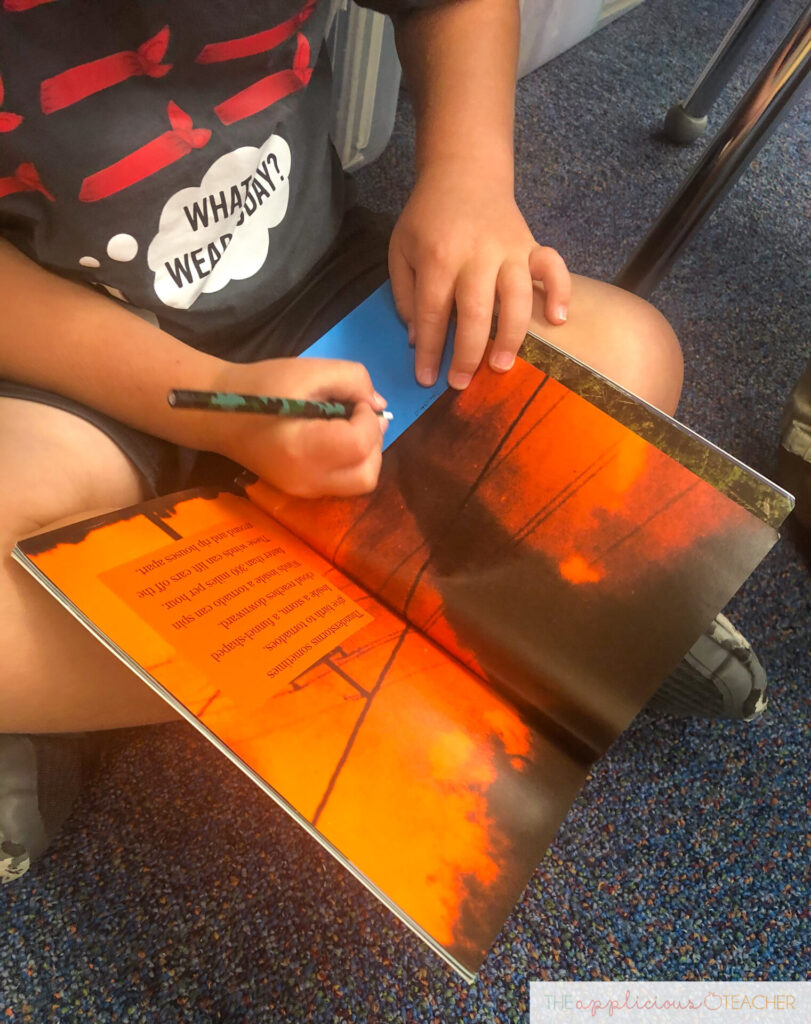
After all stickies were up, as a class, we reviewed their answers. If one didn’t make sense or needed some tweaking (like missing capital letters or ending punctuation), I just quickly handed back the sticky note for revision. Once revised, they stuck it back up!
Main Idea and Details with Super Storms
For our third read, it was time to start a little more heavy lifting. Since this would have been our third time examining the text, we went ahead and focused on just one section.
To start our lesson, I gathered students to the carpet, and we reviewed a few of our vocabulary terms using our posters from the back cabinets. Then, we reviewed the author’s purpose chart from the previous day.
Using this momentum, we discussed how good readers can use what they’ve read to create understanding from the text. Good readers can identify what a section is mostly about and provide sentences to support this. We reviewed that this was finding the main idea and details from a text.
We read one section of the text and then worked to find the main idea and three details. This modeled how to fill in the Main Idea and Details.
From there, I split students into heterogeneous leveled groups of 2-3. Students were tasked with reading specific sections of the book that talked about each severe weather type. Once finished, they could work in their group to fill out a Main Idea and Details activity sheet for each section.
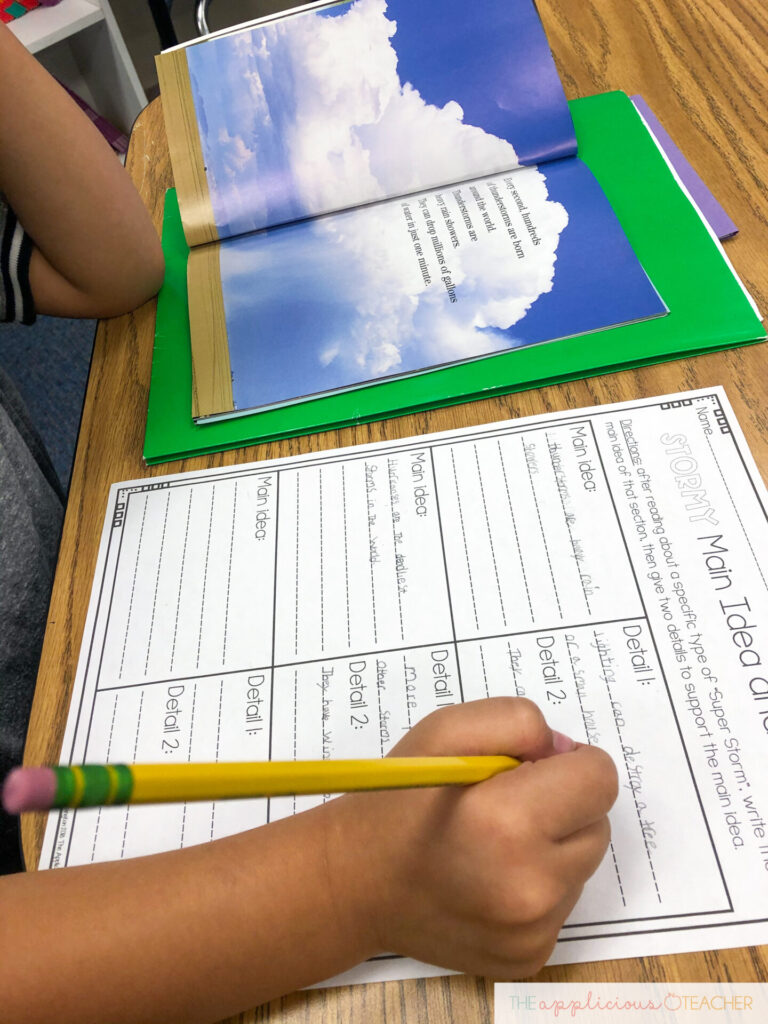
Let me tell you… there was definitely some brainwork going on in this classroom! Not only did they have to read a text, they then had to work to identify the main or central idea, and find three sentences from the text that supported the main idea. It was hard, but I was able to give support as needed since all students were working in groups.
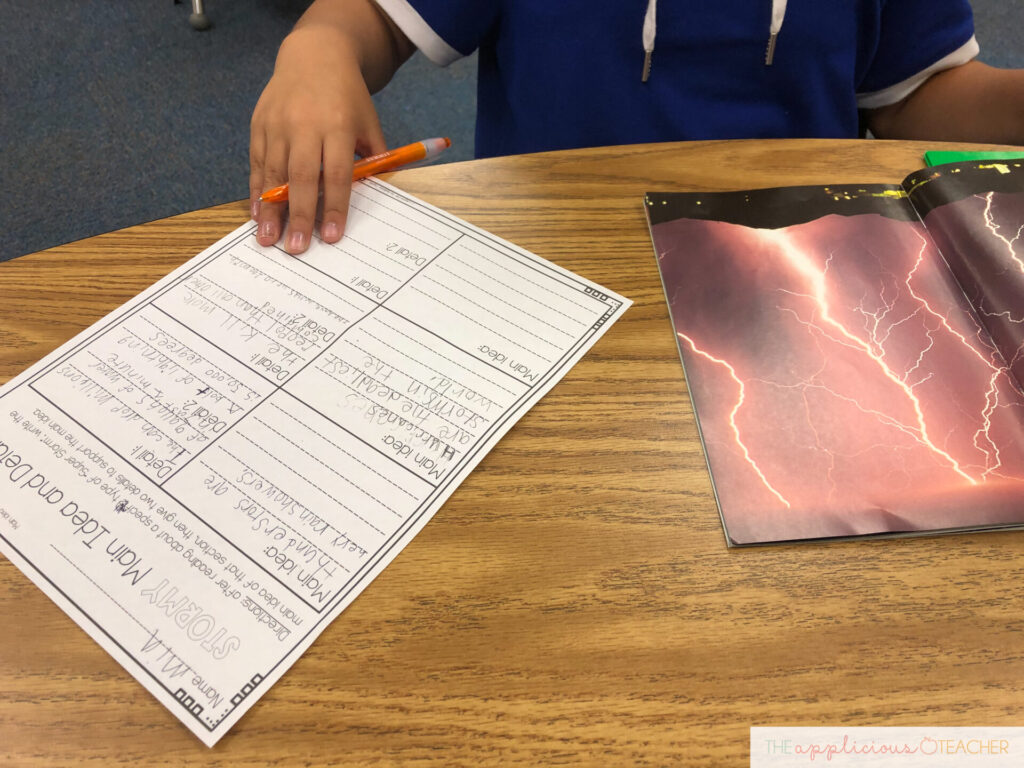
After all students had finished (about 20 minutes), we reviewed their answers as a class. I let the students guide the spot check while I walked around and checked papers.
Finishing with Opinion Writing with Super Storms
On our fourth and fifth day with the text, it was time to start writing. First, students worked to re-read the text in groups of 2-3 students.
After reading, students were tasked with choosing a weather type that they thought was the most dangerous. Then, they had to support that position using details from the text.
Let me tell you, students were so excited to share their opinion about the most dangerous type of weather! I did do a little bit of modeling on the writing portion to help students get started (and remember to include capital letters and ending punctuation).
The next day, we continued our writings. As students finished up, I passed out a writing rubric so students could make sure they had included everything that was needed in their writings. Students edited their writings as needed, then got to create their own weather buddy craft. Their weather buddy coordinated with the weather they thought was the most dangerous.
Then they published their writings by gluing them onto construction paper.
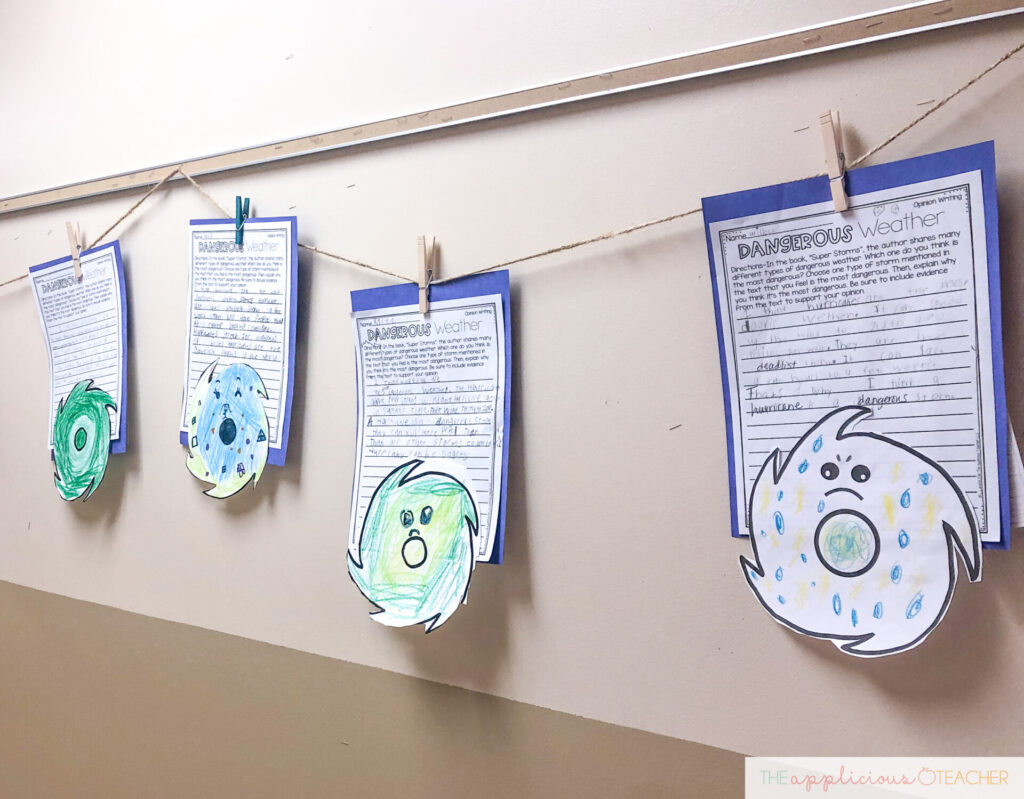
I also reread the paper with students and added any little details that might have been missing (like incorrectly spelled words or a capital letter).
On Friday, students had a chance to read their opinion pieces out loud for the class. They were so eager to share and show off their weather buddy!
We hung up the finished products in the hallway so everyone could see them! Teachers and students alike were impressed with their positions and supporting details!
Super Storms Beyond the Text
Planning a well-rounded reading and writing block can be hard, especially if you’re trying to hit multiple standards with one book. That’s why I designed Beyond the Text Units. These book-focused units take all the guesswork out of standards-aligned reading and writing activities and make it a breeze for you to implement.
You can grab all these activities mentioned here and more by checking out this unit in my store! Click here or the image below!
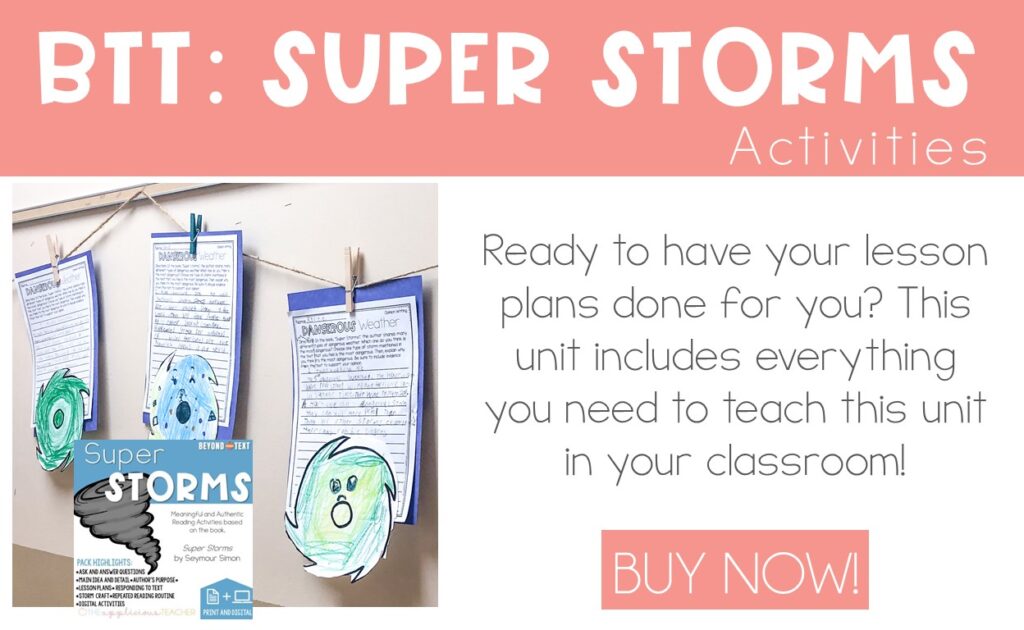
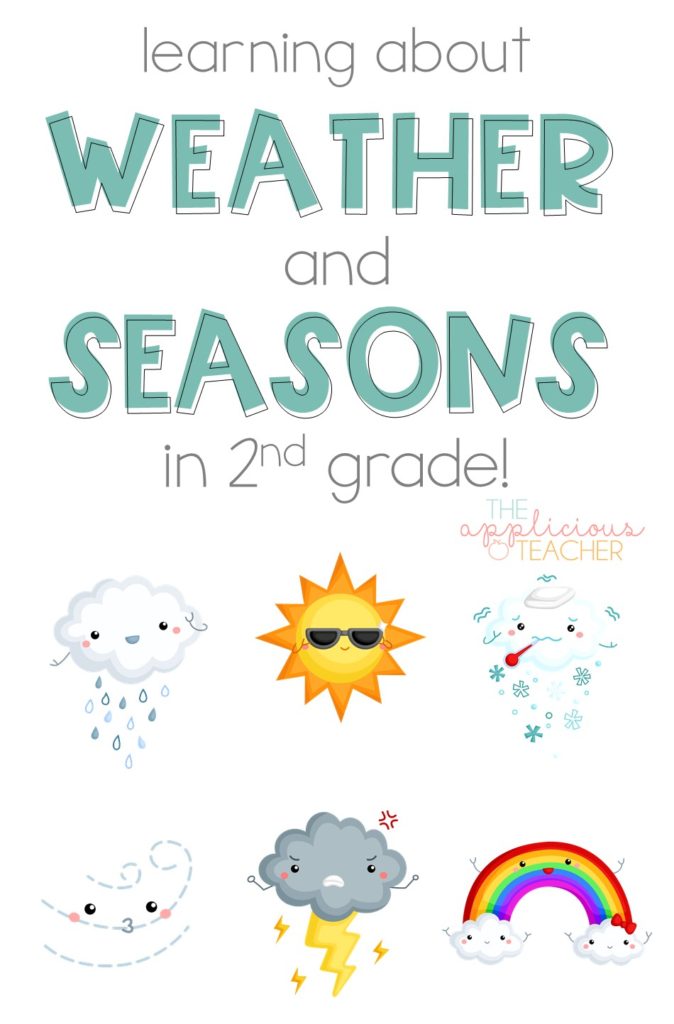
More Great Ideas!
Check out these other great ideas posts!
- Whether the Weather: Cloudy with a Chance of Meatballs
- Learning About Weather and Seasons in 2nd Grade
- Planning Made Easy: Spring Activities for 2nd Grade
- Smore’s Science Experiment: Learning About the Sun’s Energy
- Earth Day Writing Activity
- Earth Day Digital Reading Comprehension

